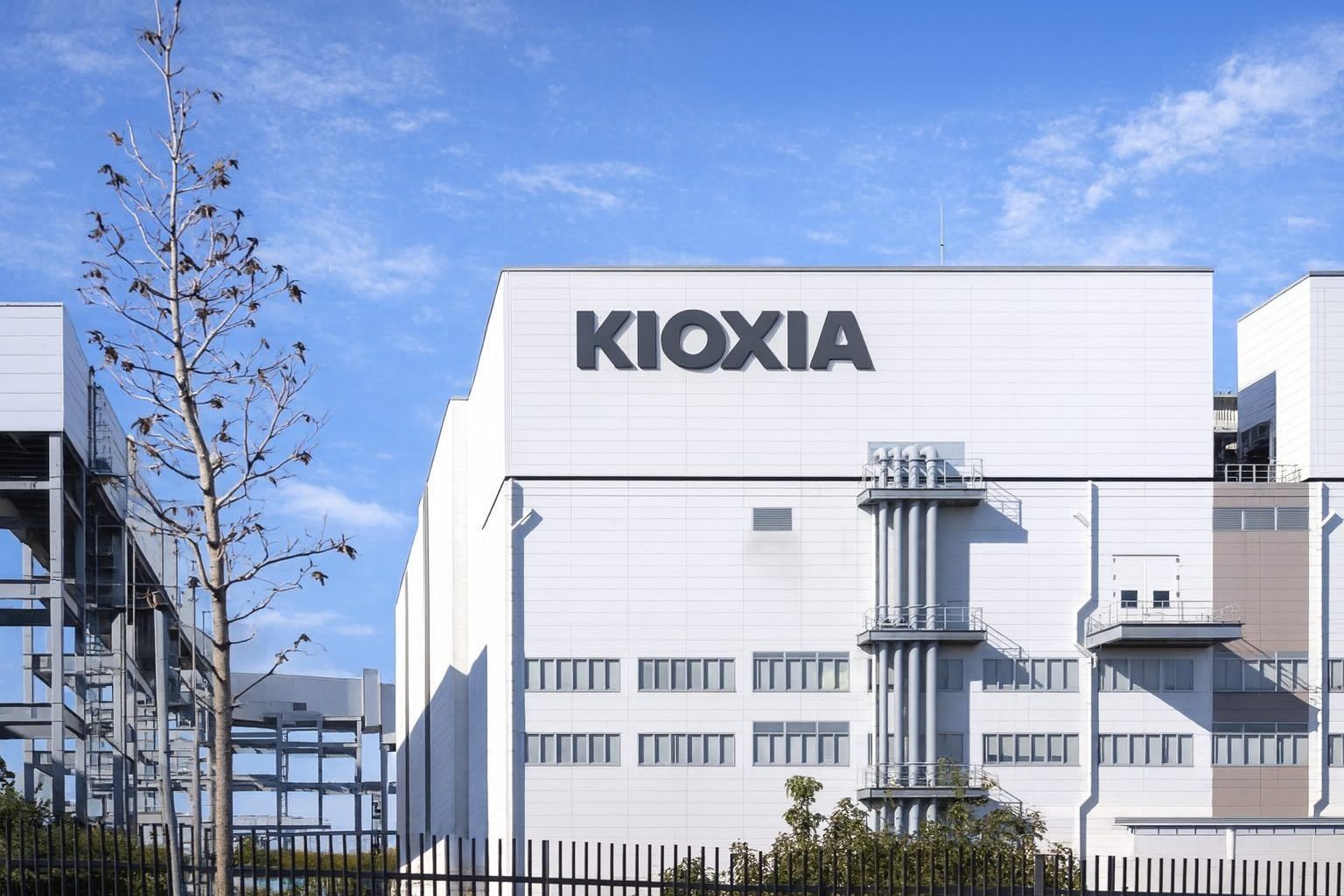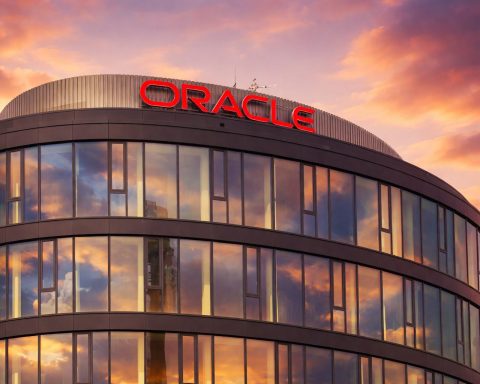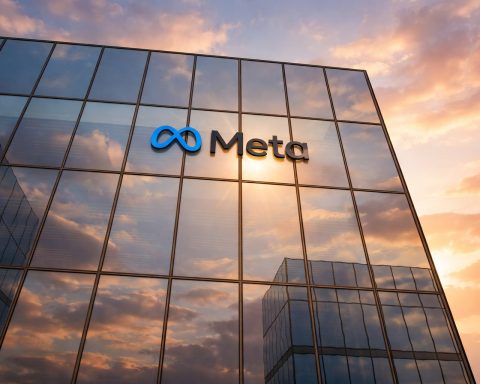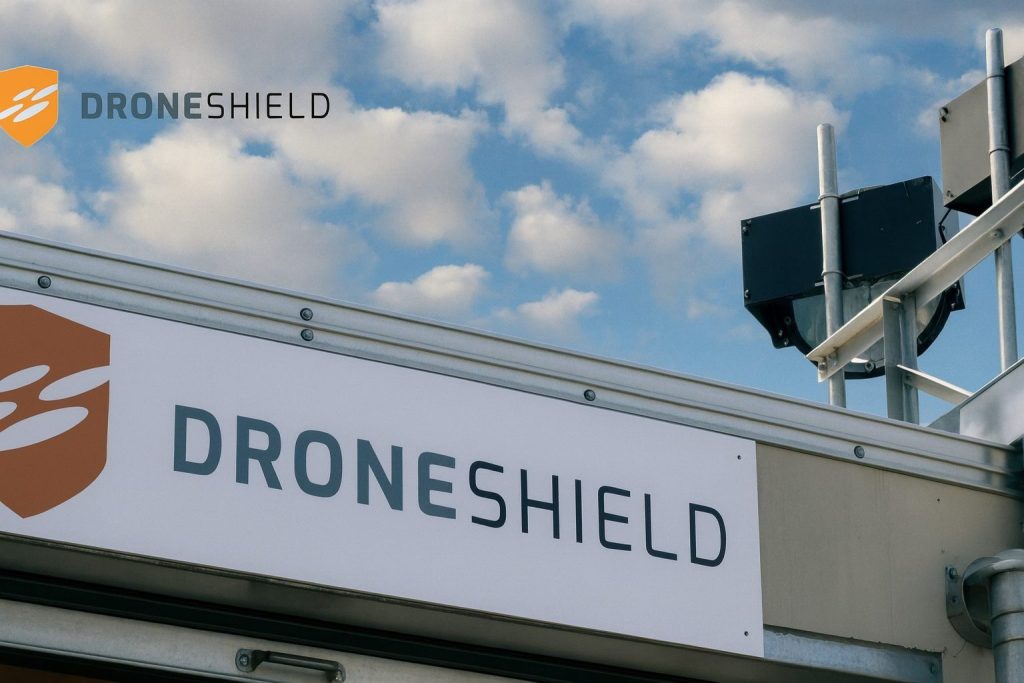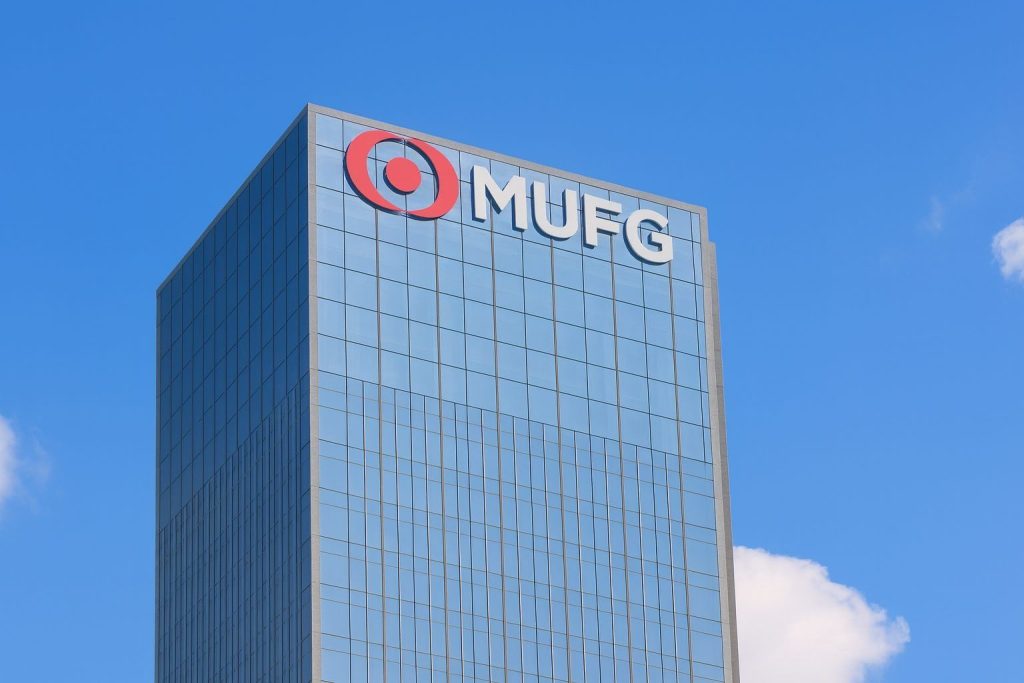Published: November 27, 2025 – All figures in JPY unless stated otherwise. This article is for informational purposes only and is not investment advice.
Kioxia’s Share Price Today: Sharp Bounce After a Brutal Two-Day Sell-Off
Kioxia Holdings Corporation (Tokyo: 285A) staged a partial rebound on Thursday, November 27, 2025, after two days of heavy selling triggered by a massive secondary share sale from Bain Capital–backed vehicles.
According to Tokyo Stock Exchange data compiled by Investing.com, Kioxia closed at ¥8,858, up 5.63% on the day. The stock traded between ¥8,460 and ¥8,860, after opening at ¥8,550, with around 15.96 million shares changing hands. [1]
That bounce comes on the heels of a 14.89% plunge on November 26, when the stock slid to ¥8,386 from ¥9,853 as investors digested news that Bain would sell a large block of shares. [2]
Even after this week’s volatility, Kioxia is still up roughly 420% in 2025 and trades at about six times its December 2024 IPO price of ¥1,455, making it one of the most dramatic semiconductor stories on the Tokyo market. [3]
Today’s Top Kioxia Stock Catalysts (November 27, 2025)
Three storylines are shaping sentiment around Kioxia stock today:
- Aftershocks from Bain Capital’s ¥330–355 billion selldown
- A new US–Japan NAND flash plant plan with Kioxia as a lead investor
- A high‑capacity enterprise SSD launch from SSSTC, a Kioxia subsidiary
Let’s break them down.
1. Bain Capital’s 36 Million-Share Block Trade Still Dominates the Narrative
The core driver of this week’s volatility is a 36 million‑share secondary offering by BCPE Pangea Cayman LP, a Bain Capital–backed entity. Multiple reports from Bloomberg, Investing.com, Techzine and others indicate: [4]
- Deal size: About 36 million shares, roughly 6.7% of Kioxia’s 540.63 million shares outstanding. TechStock²+1
- Proceeds: Estimated at ¥330–355 billion (around $2.1–2.3 billion) based on Tuesday’s closing price.
- Pricing: Shares were sold to overseas institutional investors at around ¥9,000, a steep discount to recent levels.
- Impact: The block significantly increases Kioxia’s free float but sparked a double‑digit price drop as the market interpreted the move as “smart money taking profits” after a huge rally.
A Techzine summary notes that the sale came at a “substantial discount” and triggered a “significant hit” to the share price as investors reacted to the signal that a major shareholder is willing to cut exposure. [5]
From Kioxia’s own investor relations site, Bain-related Pangea entities collectively held over 50% of the company as of September 30, 2025, alongside Toshiba’s 27.25% stake. [6] Even after selling 36 million shares, Bain remains Kioxia’s largest shareholder, but the direction of travel is clear: the financial sponsor is gradually moving from controlling owner to a large—but less dominant—holder.
For equity markets, that matters in two ways:
- Near-term supply shock: More stock becomes available for trading, which can weigh on price until the market digests the new float.
- Medium-term liquidity positive: Higher free float can improve index eligibility and make it easier for large institutional investors to build positions.
2. Fresh Tailwind: Japan and US Consider New NAND Flash Plant With Kioxia in the Lead
Balancing the Bain overhang, today brought structurally positive news for Kioxia’s long‑term growth story.
A report from Investing.com, citing the Nikkan Kogyo newspaper, says Japan and the United States are considering a public–private partnership to build a new NAND flash memory plant in the US. [7]
Key points:
- Lead investors: The project is expected to be spearheaded by Kioxia Holdings (TYO:285A) and SanDisk Corporation (NASDAQ: SNDK), its long‑time partner in NAND flash joint ventures. [8]
- Strategic goal: Strengthen supply security for advanced memory chips at a time when demand from AI data centers is straining capacity worldwide.
- Challenges: The report highlights potential disagreements over capital spending and rising regulatory risks around China, which could complicate execution.
If the plant moves ahead, it would:
- Deepen Kioxia’s ties with US customers and policymakers.
- Diversify manufacturing away from Japan, which could partially de‑risk geopolitical and natural‑disaster exposure.
- Require substantial capex, which investors will scrutinize given Kioxia’s still‑leveraged balance sheet.
For today, however, simply being named as a lead player in a US‑backed strategic fab adds credibility to Kioxia’s positioning as a core supplier to the AI infrastructure boom.
3. SSSTC (Kioxia Subsidiary) Launches 16TB Enterprise SATA SSD for AI Workloads
Also on November 27, Solid State Storage Technology Corporation (SSSTC)—a subsidiary of Kioxia—announced a new ER4 Series enterprise SATA SSD with capacities up to 16TB. [9]
According to a Media OutReach press release carried by Taiwan News:
- The ER4 Series targets AI servers, online transaction processing (OLTP), cloud platforms and analytics workloads.
- Capacities include 16TB (15.36TB) and 8TB (7.68TB) models.
- The drives deliver up to 550 MB/s read and 530 MB/s write sequential performance, and ~98K random read IOPS, with up to 55K write IOPS on the 8TB SKU. [10]
- Enterprise‑grade features include end‑to‑end data protection, power‑loss protection, secure erase and AES 256‑bit encryption, plus a five‑year warranty and 3 million‑hour MTBF.
The release explicitly notes that SSSTC is a subsidiary of Kioxia and positions the product as part of a broader push into high‑density, high‑reliability storage for AI and data‑center customers. [11]
While this is not a direct stock‑moving headline on its own, it reinforces the narrative that Kioxia is not just a commodity NAND supplier, but also an ecosystem player delivering SSD platforms tailored to AI and cloud workloads.
4. Analysts: “Weakness Unlikely to Last” as Stock Nears Technical Support
On the analysis side, a Japan Morning Connection note on Smartkarma published this morning carries a bullish stance on Kioxia. The author argues that the sharp sell‑off linked to Bain’s block sale is likely to be a “blip at best”, and suggests the stock may find technical support near its 50‑day moving average. [12]
While the full report is behind a paywall, the public summary hints at three key ideas:
- The Bain sale is large but digestible relative to Kioxia’s trading volumes.
- Broader strength in semi‑cap and AI‑linked names in Japan could provide a rising‑tide backdrop.
- Once the block is absorbed, focus may quickly shift back to fundamentals and long‑term AI demand.
For short‑term traders, this kind of commentary can help shape sentiment around whether today’s rebound has legs or is just a dead‑cat bounce.
Volatility in Context: From AI Market Darling to Whipsaw Chip Stock
To understand today’s move, it helps to zoom out.
From Investing.com’s historical data, Kioxia’s recent price path looks roughly like this: [13]
- Early November 2025: Stock hits a record high around ¥14,405, riding AI optimism and strong demand for high‑layer NAND.
- November 14, 2025: Shares plunge about 23% in one session after earnings guidance fails to keep pace with sky‑high expectations, sparking a broader sell‑off in AI‑linked chip names.
- November 20–21, 2025: Another steep slide, with the stock dropping more than 11% on November 21 alone.
- November 25–26, 2025: News of Bain’s 36 million‑share selldown triggers a 1.76% drop on the 25th and a near‑15% crash on the 26th.
- Today, November 27, 2025: Shares rebound 5.63% to ¥8,858, but remain well below mid‑month highs.
Despite this, Kioxia is still up several hundred percent since its December 2024 IPO and remains a high‑beta proxy for AI and data‑center memory demand. [14]
In short: the stock has transitioned from one‑way AI momentum trade to a high‑volatility battleground where each new headline—Bain sales, fabs in the US, earnings surprises—can swing the price by double digits.
Fundamentals Snapshot: Earnings, Growth and Valuation
Beneath the volatility, Kioxia’s fundamentals are stronger than the recent price action might suggest.
Revenue, Profit and Margins
Multiple financial databases (FT, StockAnalysis, Investing.com) show that over the last 12 months Kioxia has generated roughly: [15]
- Revenue: ~¥1.59 trillion
- Net income: ~¥155 billion
- Earnings per share (EPS, TTM): ~¥288.47
- Net margin: Just under 10% on a trailing basis.
Quarter‑on‑quarter, Kioxia’s most recent reported period (the six months ended September 30, 2025) showed meaningful improvement, with revenue rising from about ¥343 billion to ¥448 billion and net income more than doubling, according to its financial summary. [16]
Valuation
Using today’s closing price and trailing EPS:
- Share price: ¥8,858
- EPS (TTM): ~¥288.47 [17]
- Implied trailing P/E: low‑to‑mid 30s, consistent with Investing.com’s P/E estimate around 34–35x. [18]
Consensus forward estimates (as summarized on Investing.com) suggest a forward P/E in the low‑teens, implying the market expects earnings growth to continue as the memory cycle improves. [19]
One notable data point: Investing.com lists a consensus price target around ¥11,639, implying roughly 30% upside from current levels—though, of course, those targets are subject to rapid revision in a volatile name like this. [20]
Balance Sheet and Credit Rating
On the credit side, both S&P Global Ratings and Fitch Ratings assign Kioxia a long‑term rating of BB+ with a Stable outlook, reflecting a solid competitive position in NAND flash but meaningful cyclicality and leverage. [21]
That places Kioxia in high‑yield, sub‑investment‑grade territory—not unusual for a capital‑intensive memory maker, but a reminder that aggressive capex (for example, a new US fab) must be balanced against debt metrics.
Ownership: Bain Is De-Risking, Free Float Is Rising
Kioxia’s shareholder structure is itself a key part of the investment thesis.
From the company’s own IR disclosure as of September 30, 2025: [22]
- Toshiba Corporation: 27.25%
- BCPE Pangea Cayman, L.P.: 22.00%
- BCPE Pangea Cayman2, Ltd.: 14.34%
- BCPE Pangea Cayman 1A, L.P.: 8.98%
- BCPE Pangea Cayman 1B, L.P.: 5.74%
In other words, Bain‑related entities effectively controlled just over half the company prior to the recent selldown. The 36 million‑share block represents a material step down from those levels, while still leaving Bain as the largest shareholder.
For equity investors, rising free float has several implications:
- Liquidity: More stock can trade without moving the price, which can tighten spreads over time.
- Index eligibility: Higher free float and a market cap above ¥5 trillion make Kioxia a strong candidate for broader index inclusion in 2026, according to several research notes. TechStock²+1
- Overhang risk: The market will watch closely for further Bain selldowns, which could periodically weigh on the stock.
Today’s Set-Up: What the November 27 Move May Signal
Putting all of this together, what does today’s 5.63% rebound actually mean?
1. The Market Is Starting to Absorb the Bain Block
Volume today—roughly 16 million shares—was far below yesterday’s panic‑driven 62.9 million but still substantial, and close to two‑thirds of the three‑month average around 25 million shares. [23]
That suggests:
- The initial shock of the Bain announcement may be passing.
- Dip buyers and fast‑money traders are testing support in the ¥8,500–¥9,000 area highlighted by several analysts. TechStock²+1
2. Structural News Is Turning More Positive
Today’s US–Japan NAND fab report and SSSTC 16TB SSD launch both reinforce the underlying growth story:
- Governments want more trusted, on‑shore capacity for advanced memory.
- Kioxia and its subsidiaries are rolling out products aimed squarely at AI, real‑time analytics and high‑concurrency workloads—exactly the demand pockets that are driving the current memory upcycle. [24]
These headlines don’t erase concerns about AI froth or cyclical pricing, but they remind the market that Kioxia occupies a top‑tier position in a structurally growing segment.
3. Valuation Has Come Down—But Volatility Premium Remains
After dropping from highs above ¥14,000 to today’s ¥8,858, Kioxia has derated meaningfully, even as trailing earnings and margins have improved. [25]
However:
- A trailing P/E in the 30s still embeds expectations for continued AI‑driven growth.
- The stock’s violent swings—multiple 10%+ daily moves in November—mean investors are demanding a volatility premium.
For some long‑term investors, that combination of elevated but no longer euphoric valuation + strong structural story + rising free float may look attractive. For others, the memory cycle and AI sentiment will need to stabilize further before they’re comfortable stepping in.
Key Risks to Watch
Regardless of your time horizon, several risks remain front and center:
- AI and semiconductor cycle: If AI infrastructure spending slows or memory pricing undershoots expectations, Kioxia’s earnings leverage can work both ways.
- Further sponsor selldowns: Any additional large Bain block trades could trigger new bouts of volatility.
- Capex and leverage: Big investments in new fabs (particularly overseas) could pressure free cash flow and balance‑sheet metrics if not carefully sequenced. [26]
- Geopolitics and regulation: A US‑located NAND fab involving Japanese and US players will inevitably attract regulatory scrutiny, especially regarding China. [27]
Bottom Line: What November 27 Means for Kioxia Shareholders
Today’s session offered some relief for Kioxia Holdings shareholders:
- The stock bounced over 5% after an almost 15% crash the day before.
- The market is beginning to digest Bain’s 36 million‑share selldown.
- Fresh headlines around a potential US–Japan NAND plant and a new enterprise SSD launch reinforce the long‑term AI storage narrative.
At the same time, Kioxia remains:
- Highly volatile
- Still priced at a growth‑stock multiple
- Exposed to both the booms and busts of the AI memory cycle
For now, Kioxia looks like a stock where news flow, positioning and macro sentiment can move the price as much as fundamentals—something traders may welcome, but long‑term investors will approach with caution.
Before making any decisions, investors should:
- Review Kioxia’s latest semi‑annual financials and integrated report
- Consider their own risk tolerance and time horizon
- Compare Kioxia’s risk–reward profile to other global NAND and AI‑linked names
References
1. www.investing.com, 2. www.investing.com, 3. www.investing.com, 4. www.investing.com, 5. www.techzine.eu, 6. www.kioxia-holdings.com, 7. au.investing.com, 8. au.investing.com, 9. www.taiwannews.com.tw, 10. www.taiwannews.com.tw, 11. www.taiwannews.com.tw, 12. www.smartkarma.com, 13. www.investing.com, 14. www.investing.com, 15. markets.ft.com, 16. www.kioxia-holdings.com, 17. stockanalysis.com, 18. www.investing.com, 19. stockanalysis.com, 20. www.investing.com, 21. www.fitchratings.com, 22. www.kioxia-holdings.com, 23. www.investing.com, 24. au.investing.com, 25. www.investing.com, 26. www.fitchratings.com, 27. au.investing.com
